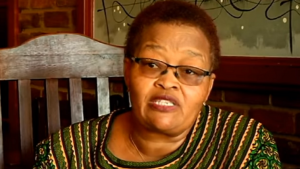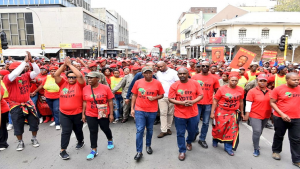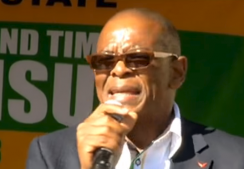By Michael O’Donovan
The Democratic Alliance’s (DA) reversal of fortunes on Election day has been partly attributed to supporters deserting it to the Freedom Front Plus (FF+).
The unfolding narrative is that the party may well be rid of what many say appears to be conservative Afrikaners leaving the party. Their exit, according to this narrative, leaves the party free to grow black support without the DA having to watch its proverbial back.
The long term future of the DA hinges on its ability to attract ever increasing numbers of black voters. Being relieved of conservative elements within the party may be a blessing. This racialised interpretation is typical of South African analysis, but misses the key lessons of the last election.
Since the 2016 local government elections, many DA supporters have become disenchanted by the party and those, like those who defected to the FF+, were simply among the few fortunate enough to find a new political home. As a rule, disillusioned DA supporters were pressed to find viable alternatives – but a few small parties offered only some refuge.
Disillusioned DA supporters concerned about property rights could have defected to the FF+ or even COPE. Cape voters could (and did find) a potential new home in De Lille’s GOOD party. Muslim voters offended by the DA’s proximity to Israel’s Benjamin Netanyahu could, and did, find an alternative in Al Jama. Undoubtedly, DA supporters found refuge in other parties (including the ANC) or, as more likely the case, simply abstained from voting.
The central question is not how best to profile the defectors, but how the DA managed to alienate so many segments of its core constituency at the same time. This magnitude of the alienation was such that any advances the DA made in attracting township or middle class Africans to their camp, were offset by larger numbers deserting the party. Explaining the turn around in terms of identities directs DA attention away from itself.
The problem for the DA is not, as one biblically inclined senior leader put it, one of now “finding the lost sheep” but rather one of finding out why the shepherd was asleep.
Clear answers are illusive but tend to point to the DA’s preoccupation with internal issues. These divisive issues include the De Lille saga and the leadership transition from Zille to Maimane. However the ANC and EFF, were beset by even more divisive internal squabbles and were able to overcome them to a greater extent. The answer lies elsewhere.
At the heart of the DA’s preoccupation with internal issues is their replication of the worst features of SA politics. Emboldened by its success after 2016, the culture of the DA turned to making representatives at national, provincial and local level accountable to the party and not to the the electorate. This was presumably used to ensure a common vision for DA members and a clear way of growing the support base. However the dominance of party allegiance was most apparent at the primary interface between the the electorate and party representatives – at the level of the municipal ward. Johannesburg’s ward 88 clearly illustrates the point. The demographic profile of the ward has barely changed since 2016.
The economic deterioration of households in the area is no better or worse than that experienced elsewhere in the province. Other things being equal, DA support should have declined at the same rate as elsewhere in the province. However instead of declining by 1.5 percent, DA support dropped by over 10 percent in the ward.
Clearly the difference in DA support cannot be attributed to changing demographics, exceptional economic conditions, anomalous service levels, or even aggressive campaigning by rival parties. It seems that the accelerated decline in a secure DA seat was predicted and is largely attributable to how the residents of the ward have been represented by the DA. Residents who have interacted with the elected ward councillor have found him inaccessible, patronising and, at best, ineffectual. Those working closest with him find him disengaged from local issues and preoccupied with City politics. In responses to complaints about the quality of their representation, the DA got defensive and closed ranks behind their delegate.
This situation was repeated across the city.
At the heart of the problem was the DA practice of deploying party faithful (usually PR councillors) into ‘safe seats’. Once ensconced in those wards, party cadres continued to represent the party and not the ward. The starkest example of this was a decision by the DA that ward representatives would vote as a block in the next Johannesburg budget. Ward 88 residents had made in clear that they were could not afford yet another above-inflation rise in municipal rates and service charges. Despite this the DA ward councillors chose to represent the party and not their constituency. The DA was perfecting the ANC’s policy of representatives being guided by the party and not by their conscience. In the DA, ward representatives were not appointed by the party – which follows this policy even when it is not in the interests of their ward.
The situation inevitably results in a rift between the electorate and those who purport to represent them. Many DA supporters were confronted with the question as to whether, given the quality of leadership immediately before them, could they entrust provincial or national level government to the party? The ward results speak for themselves.
All parties have been reminded that although party support follows economic and demographic patterns, taking any voter for granted will be punished. A modicum of wisdom will ensure that the problem is not compounded by blaming Afrikaans, Cape or Muslim voters for thinking wrongly.
A bit of humility may go a long way to healing the rift.






